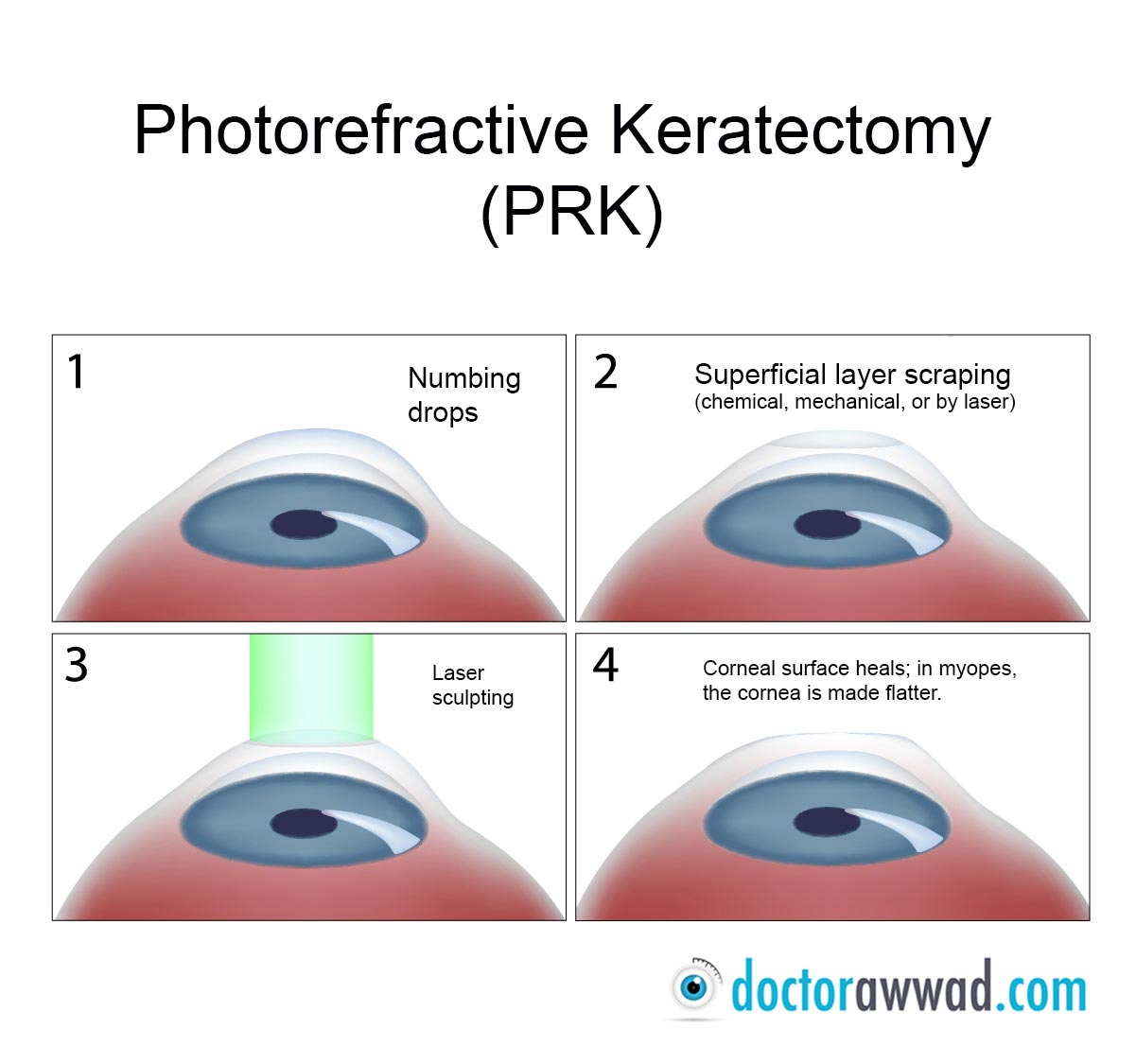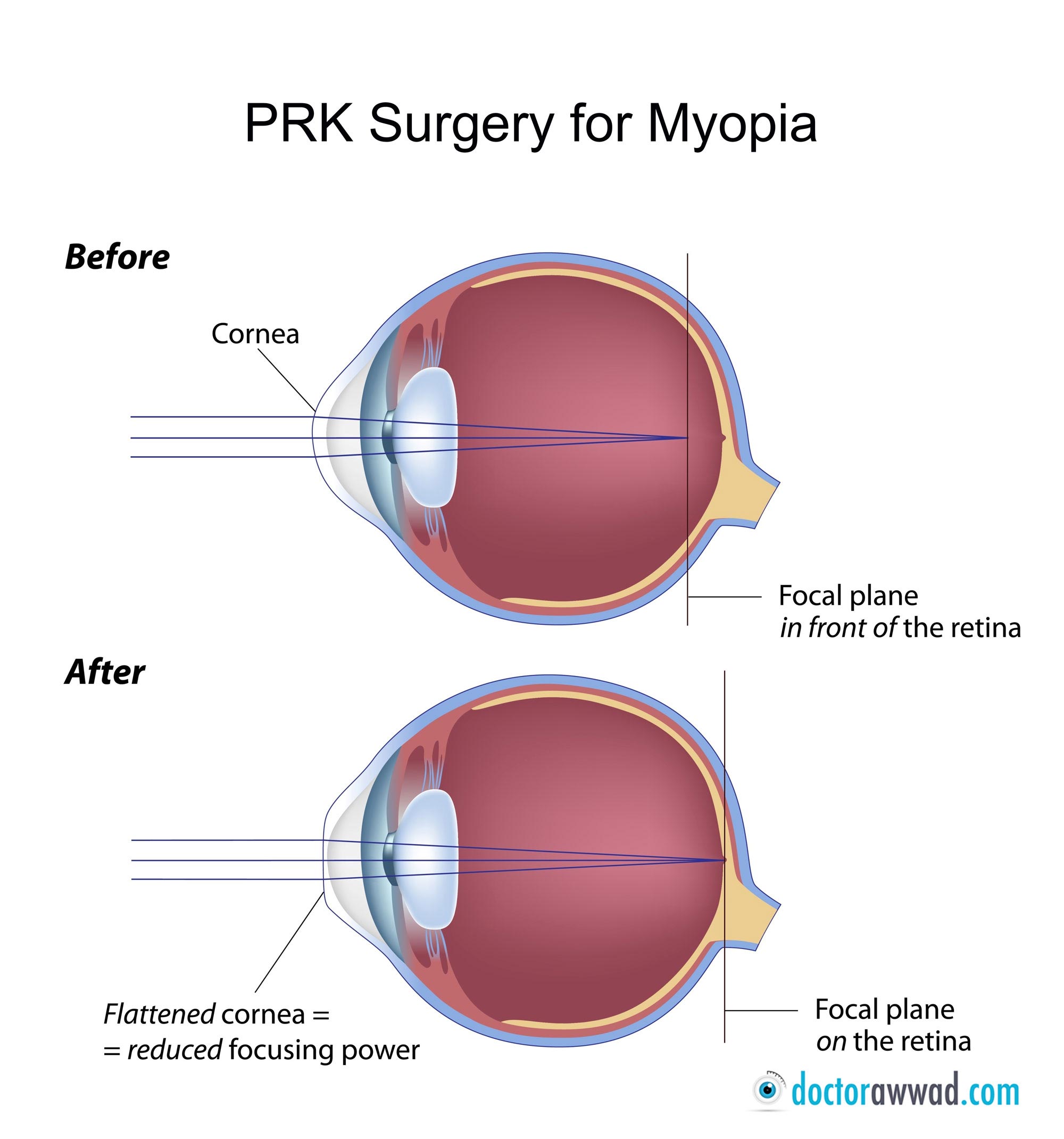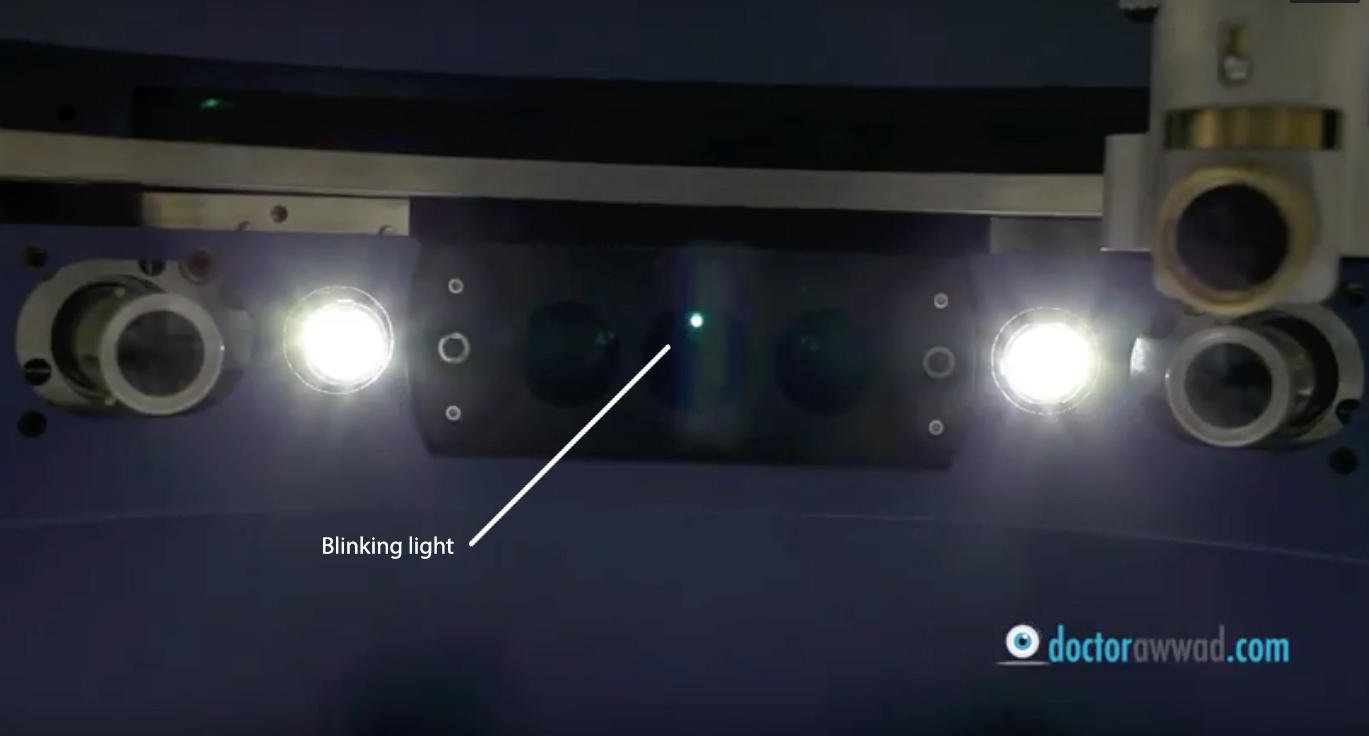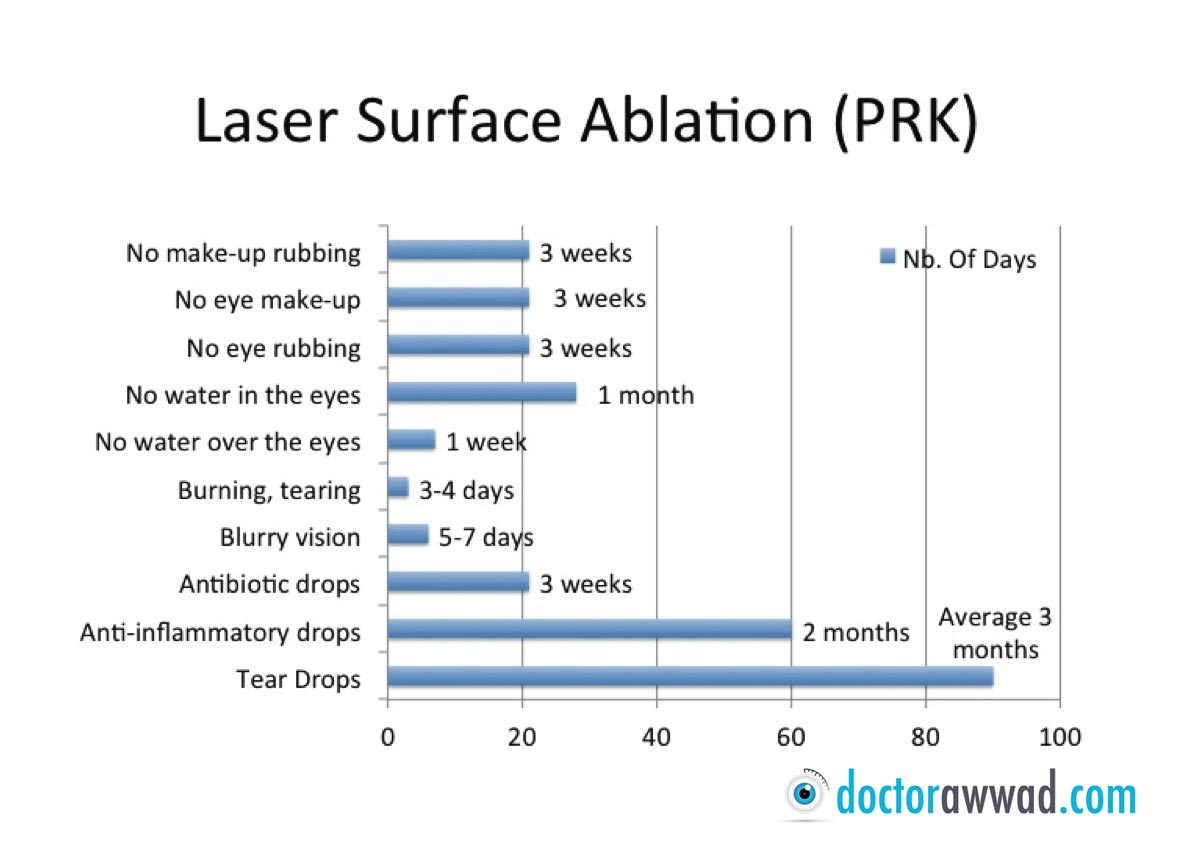Description
With laser surface ablation (PRK/TransPRK), the laser reshaping is applied on the surface of the cornea, without performing a flap or any cut. A computerized excimer laser sculpting is performed on the cornea to reshape it. A contact lens is then applied on the cornea to promote healing and improve comfort. The outer skin of cornea will regenerate, protected by the contact lens, within 3-4 days, after which the contact lens is removed. The reshaped cornea focuses light more accurately on the retina.
[PRK/TransPRK instructions, view PRK/Transprk videos]
Before
In preparation for surgery, whether PRK or TransPRK, contact lenses should be removed at least 3 days before the procedure, and sometimes up to one to two weeks, if your doctor judged necessary. Also, avoid wearing eye make-ups starting the day before the procedure.
During
You will be lying down at all time and looking up at the laser system positioned above your face. Anesthetic drop will be used to numb your eyes and make you totally comfortable throughout the procedure. A small device will be inserted between your eyelids to prevent you from closing your eye. You will be asked to look at a green blinking light. When it’s time for the laser to work, you will be notified, and you should look at the blinking light at all times. The laser, however, will follow your eye in case it moves, and will completely stop if it moves far out. Once you look at the light again, the laser will continue exactly where it left off. Looking at the light, however, will ensure uninterrupted, smoother treatment. The procedure will take around 5 minutes per eye.
You will experience blurry vision as well as episodic light sensitivity, burning, and tearing for up to 3 days. You should be able to drive and work on computers within 5-7 days. However, near as well as far vision will be much more comfortable after 2 weeks of the procedure. Vision will keep improving with time and it reaches it’s peak between 3-4 months on average. Visual fluctuations are not uncommon for the first few weeks and even months sometimes, especially when staring, reading, or working on computers, and they keep improving with time, especially with frequent lubrication.
After surgery, you will be using antibiotics and steroid anti-inflammatory drops every 4 hours (4-5 times a day each), equally spaced during daytime, and lubrication drops every hour at least for the first week and then every few hours and as needed later. Always allow 5 minutes between any two consecutive drops. When instilling eye-drops, try not to press on the eyeball. Instead, chin up, pull on the lower lid, and instill a drop in the cul-de-sac between the eyeball and the lower lid or directly on the eyeball. The eye drops will be tapered and stopped according to your doctor’s instructions, but the lubrication drops can be used as needed for several weeks to several months. Visual fluctuations are not uncommon for the first few weeks and even months sometimes, especially when staring, reading, or working on computers, and they keep improving with time, especially with frequent lubrication. Preservative-free lubrication drops can come in small unit doses.You may recap them, and re-use them several times as long as you throw them the same day. Other preservative-free eye drops come in special tiny bottles with micro filters or one-way valves.
Do’s and don’ts instructions
Wear transparent plastic eye-shields while sleeping for the first week, avoid eye rubbing for one month, minimize direct water contact like splashing your eyes while washing your face or showering as much as possible for one week, and avoid swimming for 4 weeks. Additionally, no eye make-up should be applied till after 3 weeks. UV-protective sunglasses should be worn outdoors when sunny for up to 6 months after the procedure.
Laser Surface Ablation (PRK/TransPRK) causes mild to moderate discomfort for up to 3 days after surgery, and has a slower visual recovery of 5 to 7 days before complete resumption of normal daily activity like driving and office work, with even more comfortable reading ability within 2 weeks. Further improvements keep developing over several months.




